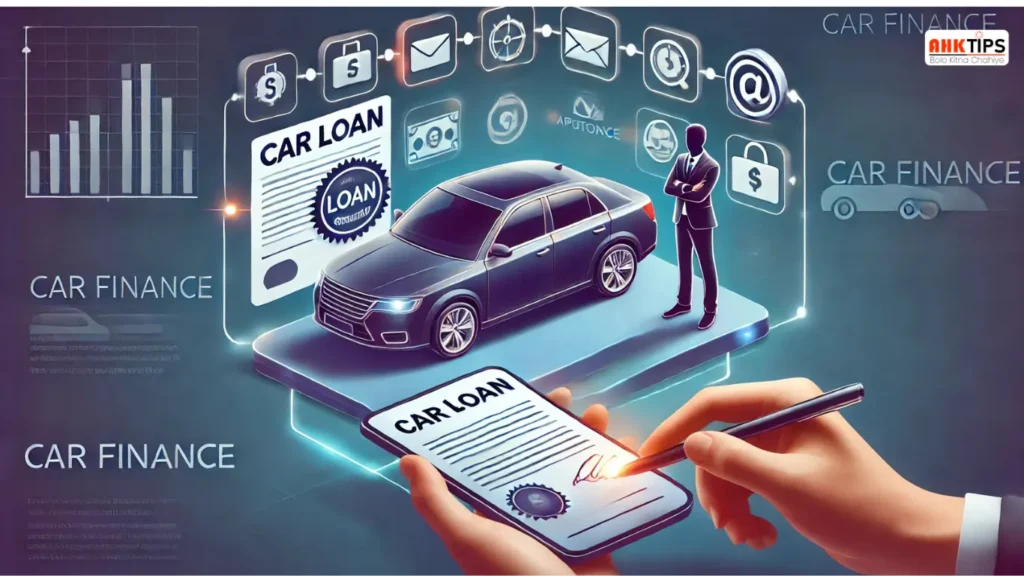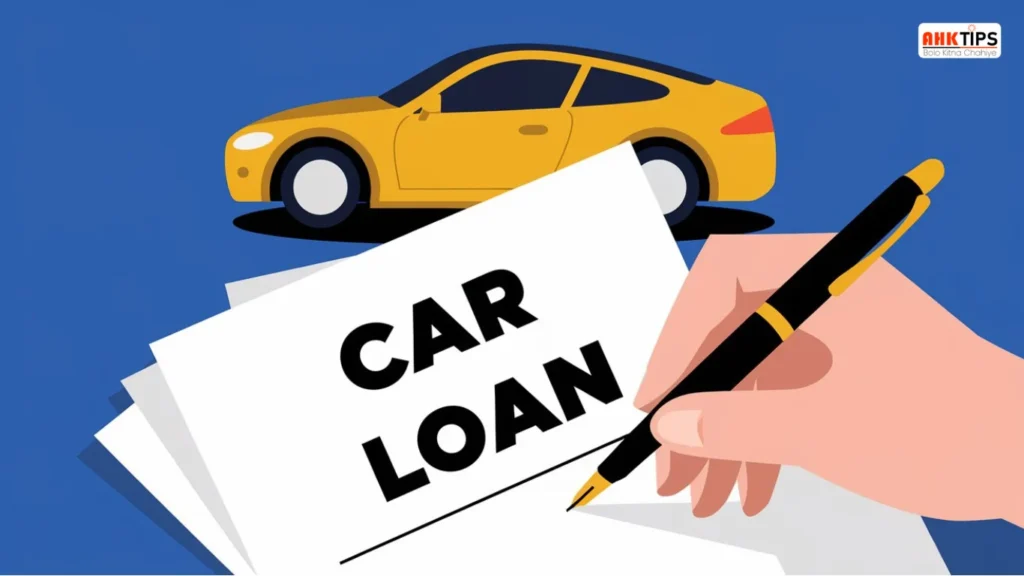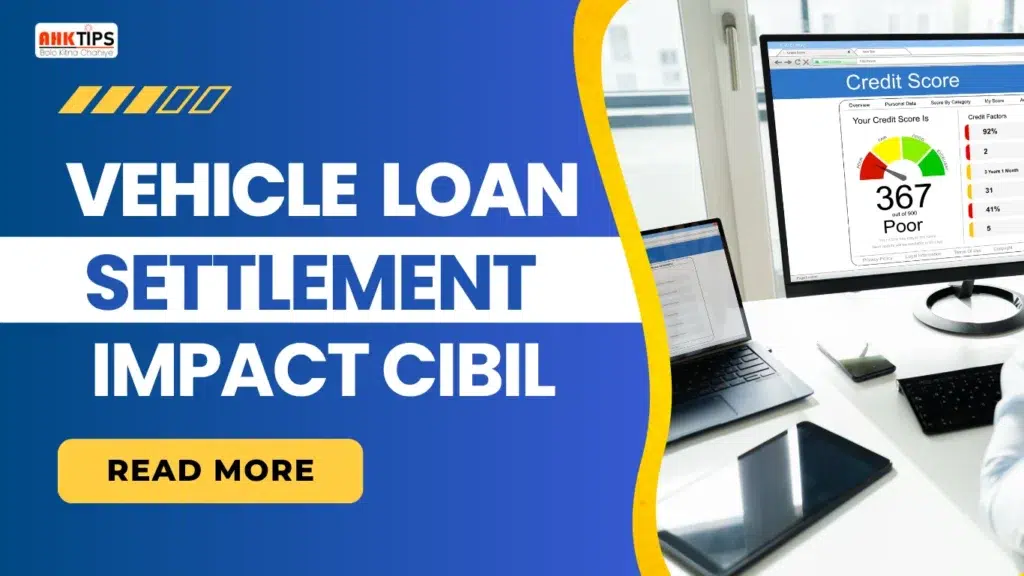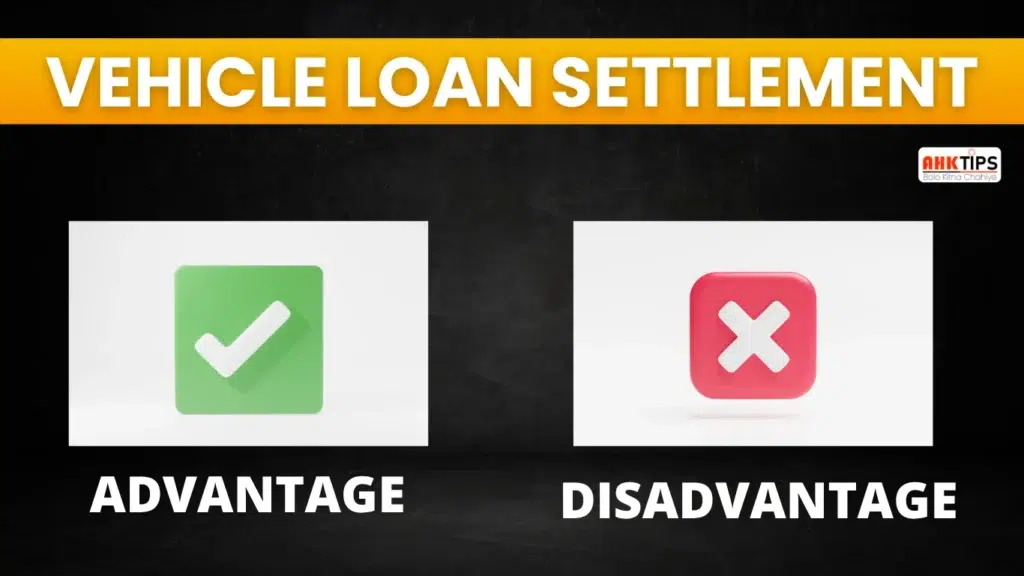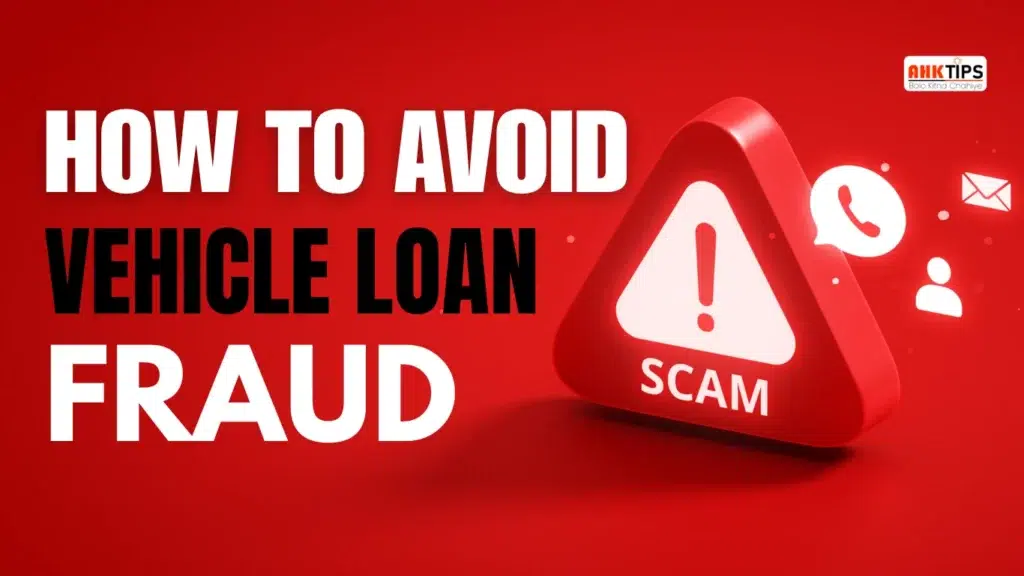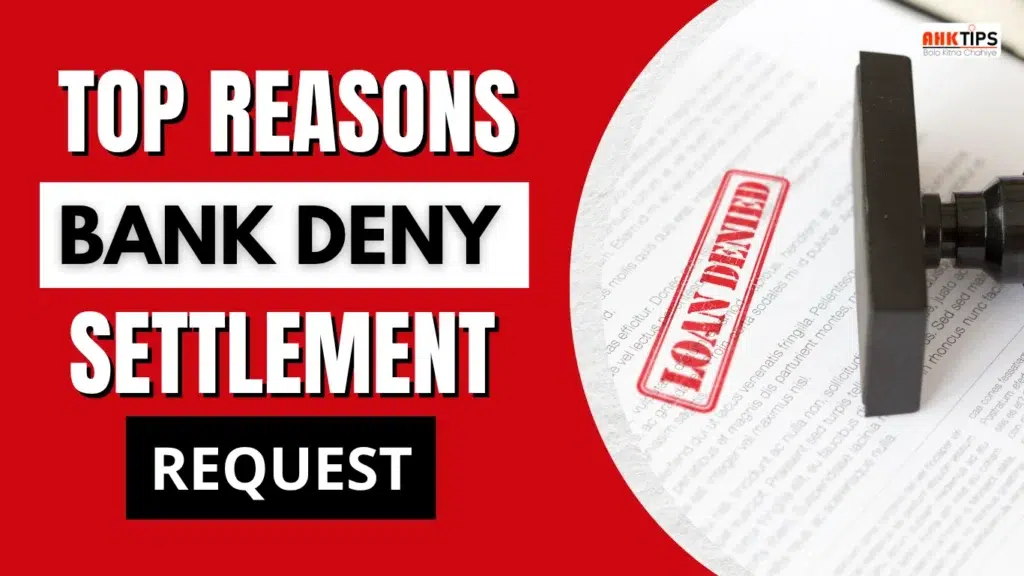Summary
This article helps vehicle loan settlement borrowers manage their loans and save money. It explains how to find your current interest rate and why it matters. You’ll get tips on negotiating a lower rate with your lender and checking if your rate is competitive. Making a part payment can help you pay off the loan early and lower your total interest. The article also talks about moving your balance to a new lender with better terms. Lastly, it covers adjusting or delaying your EMI schedule to match your finances. All these steps aim to make loan management easier, more affordable, and less stressful over time.
Introduction
Paying off a car loan can take years, but smart planning can help you save money and finish sooner. This article will go over simple steps to manage your vehicle loan settlement. It starts with walking through how to look at and understand your current interest rate. Next, you’ll see better terms, tips for negotiating, rate comparisons, and ways to check refinancing options. The article states that picking a lender with a lower interest rate can cut your loan debt. Also, making extra payments helps reduce what you owe. If your budget shifts, you can opt for flexible payment methods or postpone your EMIs. This page gives clear steps based on whether you want to pay more or save more. A few wise choices today will be beneficial for your finances tomorrow.
Understand Your Current Vehicle Loan Interest Rate First
Knowing your vehicle loan settlement interest rate is key. This is important whether you want to refinance or manage your finances better. Knowing your position helps you assess options and make smart choices. This can save you money in the long run.
Why Your Interest Rate Matters
The total amount you pay over time relies on your auto loan interest rate. A lower rate means you pay more on the loan balance. A higher rate means more of your payment goes to interest. For your loan, even a small change in interest rates can mean hundreds or thousands of dollars.
Knowing your rate helps you see if refinancing makes sense for you. It also shows if you have a good offer already.
How to Find Your Current Vehicle Loan Interest Rate
Know your current loan interest rate before you try to improve your terms or change the loan. You can discover it with ease by following these steps.
Check Your Loan Documents
Start with the documents you got upon first pulling out your vehicle loan. The lender must list the interest rate on the original disclosure form or loan agreement. Search for phrases including “Interest Rate” or “Annual Percentage Rate.”
Review Your Online Account
Log in to your lender’s website or mobile app if you handle your vehicle loan settlement online. Most loan dashboards display your current balance, payment history, and interest rate. Look in the detailed statements or account settings section if you cannot locate it on the main page.
Call or Visit Your Lender
If you can’t access your documents or online account, contact your lender right away. They have to furnish this material. Ask especially for the interest rate you now pay, not the loan terms.
How to Assess If Your Rate Is Competitive
Your current loan interest rate matters only if you can compare it to other options. Your rate can be assessed as follows.
Check Current Market Rates
Take a quick look at the auto loan rates from banks, credit unions, and online lenders. Remember that your credit score, loan duration, and car age will all affect these rates. Your rate can help you determine whether you are overpaying in comparison.
Consider Your Credit Score
Your credit profile has a strong impact on the interest rate you receive. If your credit score has improved since you applied for the loan, you may qualify for a better rate now. Many banking apps and credit reporting sites let you check your credit score for free.
Calculate Your Loan’s Cost Over Time
Use an online loan calculator. It shows how much interest you’ll pay over your loan at the current rate. Compare it then with what you would pay at a reduced rate. This will help you see the possible savings in money by refinancing.
Be Mindful of Loan Terms
When comparing rates, don’t only consider the interest rate by itself. Think about the loan’s term and whether penalties or fees apply. On a much longer loan, a somewhat lower rate could not save you money.
Negotiate Lower Interest with Your Lender
If you believe your auto loan is costing too much, you could have more influence than you might believe. Knowing how to negotiate vehicle loan settlement rates can lower your monthly payments. This helps you save money in the long run.
Why Negotiating Your Interest Rate Matters
Over time, a high interest rate on a vehicle loan can add considerable expenses. For your loan, even a modest slowdown in the rate could save hundreds of dollars. Better terms depend on knowing how to contact your lender and what to ask for.
Prepare Before You Negotiate
One needs to be ready before calling your lender. If you are knowledgeable and confident, they are more likely to take your request seriously.
Review Your Current Loan Details
Start by compiling all the details about your current loan. Know your amount. Check your monthly payment, loan term, interest rate, and payment history now. Having these ready facts demonstrates your seriousness and preparation.
Check Your Credit Score
Your loan’s interest rate is largely influenced by your credit score. If your score went up after applying for the loan, you might qualify for a lower rate. Check your score via a respectable credit agency or your bank.
Compare Current Market Rates
Research current vehicle loan rates from credit unions, banks, and internet lenders. This provides a standard against which to evaluate your present rate. Presenting your lender with evidence of lower rates elsewhere improves your case.
Strategies to Negotiate Vehicle Loan Interest
It’s time to see your lender once your research is done. Here’s how you approach the negotiations boldly and clearly.
Contact the Right Department
Call the loan servicing or customer service division of your lender. Ask to talk with someone in charge of reviewing and changing loan terms. Ask politely but directly for what you want.
Present Your Case Clearly
Describe why you think your interest rate should be lowered. Show them your awareness of present market conditions and research output.
Sample Talking Point
You can say something like:
“I have been paying on schedule and saw declining interest rates. Since the loan started, I have also raised my credit score. I would like to see if you might cut my rate to more fairly represent my present financial situation.
Mention Refinance Offers
Tell your lender if you were pre-approved for refinancing elsewhere. To keep your company, they could be ready to match or surpass the offer. This builds pressure without being aggressive.
Ask About Re-Evaluation Options
Some lenders allow you to review or change loan terms regularly. This is especially true if you have a steady payment history. Ask whether this is possible and whether your loan qualifies for a rate change.
Keep the Tone Professional
Stay polite, cool, and professional throughout the conversation. Avoid demanding threats. A cooperative attitude usually leads to better results.
Consider Making Large Part-Payment
If you want to reduce your debt load, paying a large portion off could be a smart strategy. When you make part-payments on your vehicle loan settlement, it lowers the interest. This can help you pay off the loan faster and save money—no refinancing needed.
How Part-Payment Works
Making a part-payment means paying more for your car loan than your monthly payment. This payment directly addresses your outstanding main debt. The overall interest owed on the loan also decreases.
Benefits of Part-Payment on Vehicle Loans
Paying off your loan with one big payment or several extra payments can save you money. It reduces not only your debt but also the interest you will finally pay.
Lower Overall Interest Cost
A smaller principal means lower future interest. This is because interest depends on the remaining amount. Making a part-payment lowers the auto loan interest. This reduces the amount of money on which interest is calculated. By the end of your loan, you will have saved a respectable sum.
Faster Loan Completion
Part-payments also help to cut the loan duration. A smaller balance can help you pay off your debt sooner. This depends on your loan type and lender rules. You might finish months or even years early.
When to Consider a Part-Payment
Timing will determine how much advantage a part-payment offers. Paying your lump sum sooner will affect your total interest more than anything else.
Early Stage of Loan Term
Most auto loans are arranged such that, early on, you pay more interest. Making a part-payment now will greatly lower the total interest on the loan.
After a Bonus or Cash Windfall
Consider funding your car loan with some of any extra money you get—a work bonus, tax refund, or otherwise. One-time initiatives can cut financial pressure and help save money in the long run.
How to Make a Part-Payment Effectively
If you follow some basic steps, you can ensure that a part-payment is used correctly and to your advantage.
Check Your Lender’s Policy
Not all banks provide free of charge. Some could charge a small fee or limit your extra payment frequency. Find out from your lender whether costs apply and whether part-payments are accepted.
Specify the Purpose of Payment
Ask the lender to apply the money directly to the principal balance, not as advance EMIs for payment. This ensures that your lump sum money directly reduces the interest-producing amount.
Confirm the Updated Loan Terms
Once the part-payment is under control, get your lender an updated loan statement. Check the revised principal, interest, and tenure to ensure the changes fairly reflect your payment.
Keep Proof of Payment
Always save along with any written letter to the lender a copy of the transaction receipt. This keeps your records safe if issues arise later. It also helps when you review for financial planning.
Balance Transfer to Lower-Rate Lender
High interest rates on a vehicle loan settlement can squeeze your monthly budget. A balance transfer on your vehicle loan can help lessen your money worries if you’re paying too much. Switching to a new lender with lower interest rates can reduce your total payments. This means you’ll have a more manageable repayment plan.
What is a Vehicle Loan Balance Transfer?
A vehicle loan balance transfer means moving your loan to a new bank or lender. You do this for better terms. Many people look for flexible repayment options, top-up loans, or great customer service. However, most customers choose to transfer to benefit from lower interest rates.
A balance transfer is smart when interest rates fall. It’s also a good idea if you find a lender with better terms. It allows you to lower your monthly EMI as well as the overall interest paid during the loan’s lifetime.
Why Consider a Balance Transfer?
Less Interest Rates
Changing your auto loan is most often done to benefit from a reduced interest rate. The whole amount you pay over the loan term might be greatly lowered by even a minor rate decline. Reduced EMIs and quicker loan clearance follow from cheaper interest.
Improved Loan Terms
Some lenders could have better terms than your present bank. You won’t find prepayment fees here. There are longer loan terms, too. Plus, you can get bundled offers with insurance or top-up loans.
Better Service Experience
A balance transfer lets you find a better lender. This is a good option if you’re not happy with your bank’s service.
How the Balance Transfer Works
Your car loan can be transferred quite easily. You apply for a transfer once you come to a lender making a better offer. You will begin repaying your loan under the new terms once the new lender pays off your debt to your current bank.
See the terms of your present loan for any lock-in terms or prepayment fees.
Key Things to Keep in Mind
Evaluate the Cost-Benefit Ratio
Saving money is the main benefit of a vehicle loan settlement balance transfer. But make sure that any fees don’t cancel out those savings. Think about the savings from lower interest rates. Also, consider the costs of processing, paperwork, and prepayment fees.
Choose the Right Time
It would be advisable to choose a transfer in the early loan term. Early loan switching helps you save more since interest rates start higher.
Maintain a Good Credit Score
A strong credit history and a clean repayment record will help you get better rates with the new lender. Usually, a better credit score denotes more negotiation strength for better terms.
Read the Fine Print
Review the new loan agreement closely before consenting to move. Know the key clauses. Understand the interest calculation method. Be aware of late payment penalties. Review the return policy.
Final Thoughts on Vehicle Loan Balance Transfer
Transferring your vehicle loan balance helps you pay off debt faster. It lowers your financial burden and gives you control over your loan. For your loan, smart choices can save you money. It all depends on good research and timing.
Reduce Your EMI Duration or Reschedule Payments
Paying down a vehicle loan can take years, and over time, the interest mounts to be quite large. Still, controlling your repayment schedule will help you cut expenses. You can lower your interest and boost your finances by delaying vehicle EMI payments.
What Does It Mean to Reschedule Vehicle EMI Payments?
Adjusting your loan structure or schedule means changing your vehicle EMI payments. You can shorten the loan term, adjust the EMI, or extend the tenure for temporary relief.
Lenders let you adjust repayment terms based on your life events, cash flow, or income right now. The goal is either to save money by reducing interest or to lower monthly payments.
Choosing a Shorter EMI Duration
Save on Total Interest Paid
Choosing a shorter loan term may raise your monthly EMIs. But you’ll pay much less interest overall. Interest is calculated on the outstanding balance. A shorter term means less time for interest to grow.
The reduction in total cost can be significant even if you pay somewhat more each month. If your income has increased or you have extra cash, this is a great choice for quick repayment.
Faster Loan Clearance
Along with saving money, a shorter repayment term releases you from debt sooner. Once you pay off your loan, your monthly income can be used for other things. You can save, invest, or make a new purchase.
Opting for Flexible EMI Options
Adjusting to Your Financial Situation
A job change, slower business, or unexpected expenses might lead you to lower your EMI for a while. Under such circumstances, you might stretch the loan term to postpone car E MI payments.
This lowers the monthly payment value while increasing the number of EMIs. This choice may lead to more interest. But it gives you some breathing room when money is tight.
Step-Up or Step-Down EMI Plans
Some lenders offer structured repayment plans, like step-up EMIs. With these, you begin with a lower EMI that increases over time. Those anticipating a consistent increase in income might find this appropriate.
Conversely, step-down EMIs start with a larger monthly sum and progressively lower. If you want to pay off more in the early years while your income is steady, this works nicely.
Things to Consider Before Rescheduling
Check with Your Lender
Not every bank or NBFC lets restructuring of vehicle loan settlement EMIs be possible. You will have to properly seek a reschedule and get in touch with your lender. It can call for documentation, fees, or even a credit review.
Assess the Impact on Credit Score
Postponing won’t hurt your credit score. But missed payments or defaults before restructuring can. Make sure your payments go without disturbance during the procedure.
Calculate Long-Term Benefits
See how the change impacts your total spending. Use a loan calculator or talk to your financial adviser. Make sure the advantages of postponing exceed any extra expenses or interest hikes.
Smart Planning for EMI Management
Rescheduling car E MI payments helps you to handle your loan depending on your actual need. Flexible E MI planning keeps you financially confident and focused. It helps if you want to pay off your loan faster or manage it more easily.
Conclusion
Vehicle loan settlement is good. Loan management for smart cars will enable you to save thousands and reduce stress. Check your current interest rate. This will help you see if you can get better terms. If your credit score has improved or if market rates are lower, negotiate or refinance to save money. Paying extra on your loan can reduce its length and cut down the interest you owe. Consider a balance move to one with better service and lower rates if your present lender is not helpful. Check with your lender if you need to delay your EMI schedule if your finances change. Follow these easy steps to manage your loan, reduce your debt, and boost your finances. To maximise your auto loan, always stay educated and make forward plans.
FAQ’s
Que: Why should I know my current vehicle loan interest rate?
Knowing your interest rate helps you assess offers. It lets you decide if refinancing is smart, and it may save you money.
Que: How can I reduce my auto loan interest?
Ans: You can cut costs by negotiating with your lender. You can also think about refinancing, making part-payments, or switching to a lender with better rates.
Que: What is a transfer of a vehicle loan balance?
You can lower your monthly payments by switching to a lender with a lower interest rate or better terms.
Que: Can I change my EMI schedule if my income changes?
You can ask your lender to shorten the loan period to lower the interest. Or, you could extend it for smaller monthly payments.




